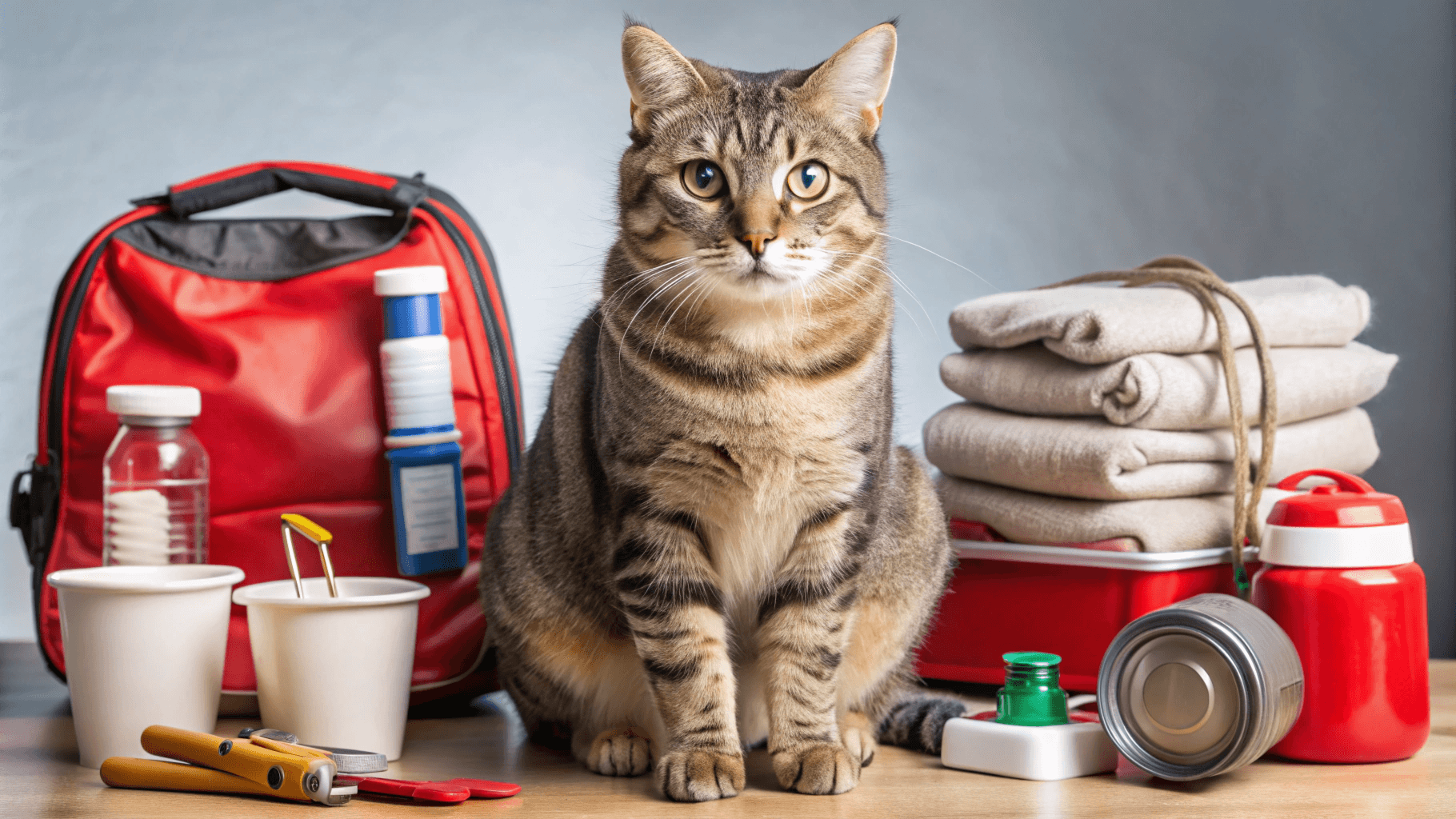Preparing for Emergencies: What to Do Before a Hurricane

When a hurricane is on the horizon, your first instinct may be to focus on protecting your home and your loved ones. But as a cat owner, ensuring your feline friend’s safety is just as critical. Cats, in particular, are sensitive creatures, and the chaos of an impending storm can cause them a great deal of stress. With the right preparation, you can keep your cat safe and calm during emergencies like hurricanes.
The first step in preparing for a hurricane is creating an emergency kit for your cat. This is something I always emphasize to my clients at Whisker Wellness—don’t wait until the last minute. Just like you would pack essentials for yourself and your family, your cat will need a survival kit in case of evacuation or a prolonged period without access to regular supplies. The kit should include enough food and water to last at least a week, as well as any necessary medications. Be sure to pack a collapsible water bowl, and if your cat is on a special diet, make sure you have an adequate supply of their food. Don’t forget to bring extra litter and a portable litter box to ensure they can remain comfortable no matter where you end up.
Medication and medical records are another critical part of your emergency preparation. If your cat is on any medications, keep a week’s worth in your kit, along with clear instructions on dosages. Additionally, pack a copy of your cat’s medical records, including proof of vaccinations. This can be incredibly important if you need to stay in a shelter or a boarding facility that requires health documentation.
Next, it’s essential to have a plan for evacuation. Cats can be tricky during emergencies because their natural instinct is to hide when they sense something is wrong. Start by designating a safe room in your home where your cat can be contained if things start getting hectic. It should be a quiet space where they won’t be disturbed by noise or too much activity. Place their carrier nearby so they can become familiar with it before you need to use it. I always recommend getting your cat accustomed to their carrier well in advance, making sure it’s a comfortable and familiar space rather than a source of anxiety.
When the time comes to evacuate, keeping your cat calm during the process is crucial. Cats can pick up on your stress, so try to remain as calm and collected as possible. Speak to them in soothing tones, and if necessary, use a blanket or towel to cover the carrier. This creates a dark, safe environment for them, which can help reduce anxiety. A pheromone spray like Feliway can also help calm them down during transport.
If you’re planning to stay with family, friends, or at a pet-friendly hotel, call ahead to confirm that they can accommodate your cat. If you’re headed to a shelter, make sure the shelter accepts pets, and if not, have an alternative plan. Many communities have designated shelters for pets during emergencies, and it’s important to know where they are before the storm hits.
In the event that you cannot evacuate, keeping your cat safe during the storm is equally important. Move them to an interior room, away from windows and anything that could fall or break. Make sure they have access to their litter box, food, and water, and try to keep the environment as calm as possible. If your cat is especially nervous during storms, playing soft music or using white noise machines can help drown out the sound of heavy rain or thunder.
It’s also essential to keep identification up to date. Ensure your cat’s collar has a secure ID tag with your current contact information, and if your cat isn’t already microchipped, this is a good time to consider it. If your cat becomes lost during the chaos of an evacuation, a microchip can significantly increase your chances of being reunited.
Finally, once the storm has passed, monitor your cat closely for signs of stress or trauma. Cats are creatures of habit, and any disruption to their routine can cause lingering anxiety. Stick to their normal feeding schedule and offer plenty of affection to help them feel secure again. If you notice any unusual behavior, such as hiding for extended periods or refusing to eat, it may be a sign that your cat is still feeling unsettled. Give them time to adjust, but don’t hesitate to consult your vet if the behavior continues.
Preparing for a hurricane is no easy task, but by taking the time to plan ahead, you can ensure that your cat remains safe, calm, and cared for during an emergency. At Whisker Wellness, we understand how much your cat means to you, and we’re here to help you navigate these tough situations. Whether it’s advice on creating an emergency kit or help with transportation to a safe location, we’re always ready to support you and your furry friend.
